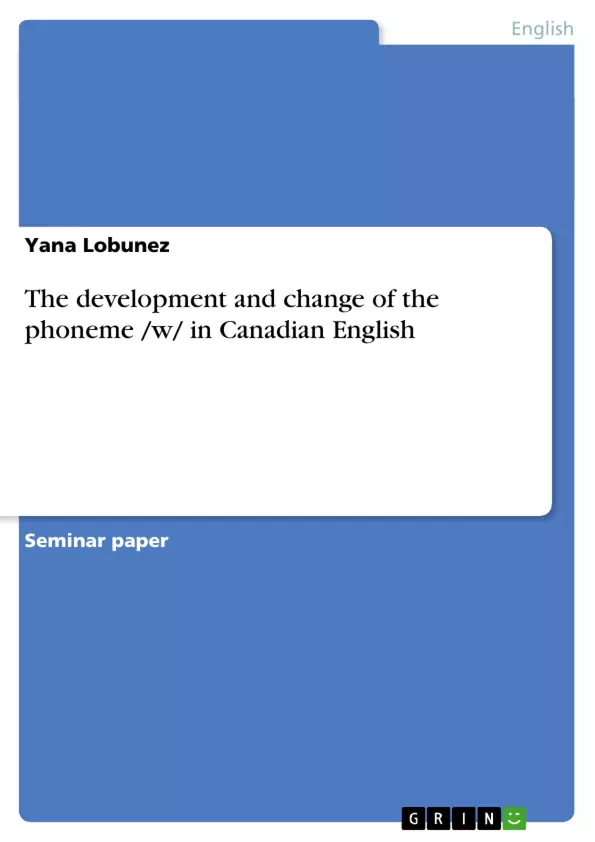From the point of view of a continental standard, Canadian English exhibits remarkable phonetic patterns. This term paper demonstrates the development and change of the phoneme /w/ in Canadian English following the research by Chambers. This paper will begin by taking a quick look at the historical development of the phoneme. The phoneme /w/ has several realizations in various dialects of English. Canada is one of the countries where the allophone [hw] has been rather persistent. Nevertheless, /hw/-pronunciation has been disappearing there over the years. I try to indicate how the phoneme is changing recently illustrating this with case studies whenever possible. The age, social classes of subjects as well as the regions of Canada are especially relevant for the given description.
Inhaltsverzeichnis (Table of Contents)
- 1. Introduction
- 2. Historical development of phoneme [w]
- 3. Change in progress
- 4. Age and variations
- 5. Regional variations
- 6. Social embedding of variation and change
- 7. The reasons for the change
- 8. The future of the phoneme /hw/
- 9. Development of a Continental standard
Zielsetzung und Themenschwerpunkte (Objectives and Key Themes)
This paper examines the development and change of the phoneme /w/ in Canadian English, focusing on the shift from the preaspirated /hw/ to the voiced /w/. It investigates the historical context of this change, its current progress, and the influence of age, region, and social factors.
- Historical evolution of the /w/ phoneme in English.
- Analysis of the ongoing shift from /hw/ to /w/ in Canadian English.
- The impact of age on the pronunciation of /w/ and /hw/.
- Regional and social variations in the pronunciation of /w/.
- Potential future developments of the /hw/ phoneme.
Zusammenfassung der Kapitel (Chapter Summaries)
Chapter 1: Introduction introduces the topic and the research methodology. It highlights the contrast between language variation and change and positions Canadian English within this context.
Chapter 2: Historical development of phoneme [w] traces the historical origins of the /w/ and /hw/ phonemes from Proto-Indo-European through Germanic to modern English. It uses examples from historical texts to demonstrate the changes in pronunciation over time.
Chapter 3: Change in progress analyzes the ongoing shift from /hw/ to /w/ in Canadian English, providing data illustrating the current state of change and its progression across different age groups.
Chapter 4: Age and variations explores the relationship between age and the pronunciation of /w/, suggesting that age is a significant factor influencing articulation, independent of sex, ethnicity, or education.
Schlüsselwörter (Keywords)
Canadian English, phoneme /w/, /hw/, language variation, language change, historical linguistics, sociolinguistics, age variation, regional variation, phonetic change.
- Quote paper
- M.A. Yana Lobunez (Author), 2008, The development and change of the phoneme /w/ in Canadian English , Munich, GRIN Verlag, https://www.grin.com/document/125565



